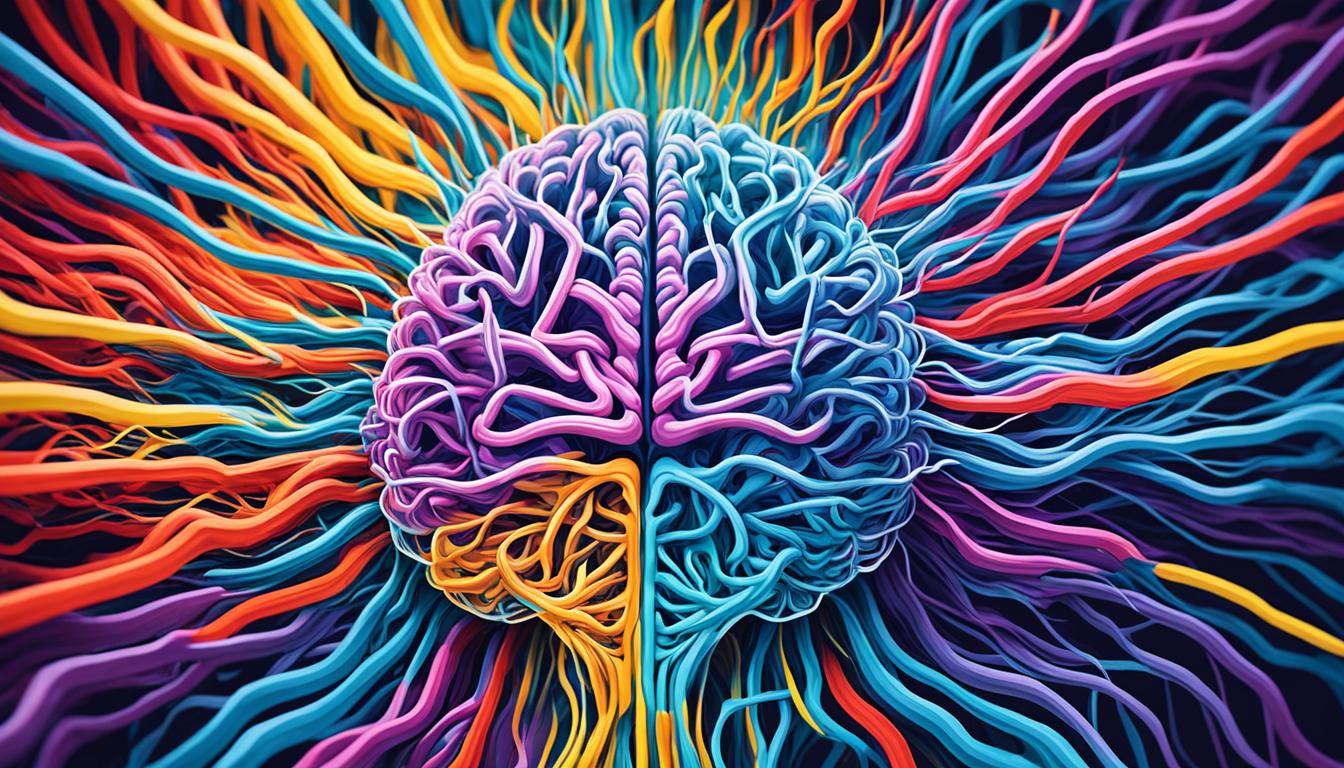Frontal lobe seizures are a widespread form of epilepsy starting in the brain’s frontal lobe. This part of the brain handles thinking and movement. Seizures here might look like mental health problems or sleep issues. Knowing the signs, causes, and how doctors diagnose and treat these seizures is crucial.
Key Takeaways:
- Frontal lobe seizures are a type of epilepsy that starts in the frontal lobe of the brain.
- These seizures can cause symptoms that are sometimes mistaken for mental illness or sleep disorders.
- Possible causes of frontal lobe seizures include changes in brain tissue, infection, injury, stroke, tumors, or other conditions.
- Diagnosis of frontal lobe seizures involves medical evaluation and tests such as electroencephalography (EEG) to record brain activity during a seizure.
- Treatment options for frontal lobe seizures include medications, surgery, and electrical stimulation. Stem cell therapy is also being explored as a potential treatment option.
Symptoms of Frontal Lobe Seizures
Frontal lobe seizures can show many different signs. They usually end in less than half a minute. Some signs include:
- Turning your head and eyes to one side
- Not talking or having trouble understanding others
- Laughing or yelling loudly
- Doing strange poses with your body
- Repeating certain movements like rocking back and forth
The exact symptoms can change based on the part of the frontal lobe that’s affected.
Causes and Risk Factors of Frontal Lobe Seizures
Frontal lobe seizures can start because of several things. These include things like tumors, strokes, or infections. These health issues mess with the brain’s normal electrical patterns. As a result, the brain’s activity goes off-balance, leading to seizures.
Often, the cause of frontal lobe epilepsy is unknown. For around half of patients, doctors can’t pinpoint what’s causing their seizures. This uncertainty can be hard to deal with. Efforts in research are ongoing to figure out more about what causes these seizures.
There are certain risk factors that make getting frontal lobe seizures more likely. These include:
- A family history of seizures or brain disorders
- Head trauma, such as a severe blow to the head or a concussion
- Brain infection, like meningitis or encephalitis
- Brain tumors, which can affect the frontal lobe’s activity
- Irregular blood vessels or brain tissues
- Strokes that harm the frontal lobe’s blood vessels and tissues
Doctors must look into these risk factors when someone has frontal lobe seizures. Knowing these factors guides how to treat and manage seizures better. This insight is crucial for the care of those with the condition.
| Cause | Description |
|---|---|
| Tumors | Abnormal growths of cells in the brain can disrupt normal brain activity and trigger seizures. |
| Stroke | A sudden interruption in the blood supply to the brain can lead to damage in the frontal lobe and seizure activity. |
| Infection | Brain infections like meningitis or encephalitis can cause inflammation and affect the functioning of the frontal lobe. |
| Traumatic Brain Injuries | Severe head injuries resulting from accidents or falls can disrupt brain activity and contribute to frontal lobe seizures. |
| Genetic Disorders | Some inherited conditions can increase the risk of developing frontal lobe seizures. |
Frontal Lobe Seizures: Diagnosis, Treatment, and Complications
Diagnosing frontal lobe seizures needs a detailed medical check-up. Doctors use tests like electroencephalography (EEG). This test watches the brain’s activity during a seizure. It shows specific patterns that signal frontal lobe seizures. This helps doctors confirm the type of seizure a person has.
The main treatment for frontal lobe seizures is using medicines. Doctors often prescribe antiepileptic drugs. These drugs help control and lessen the seizures. If these drugs don’t work, surgery might be an option. Sometimes, the part of the brain causing the seizures can be removed.
There are also other, more advanced treatments for these seizures. For example, neuromodulation therapies use methods like vagus nerve stimulation or deep brain stimulation. They aim to control brain activity and lower the number of seizures.
Seizures from the frontal lobe can be very troubling. They sometimes lead to serious issues. Long seizures can hurt the brain or be life-threatening. Also, seizures can cause injuries. People with frontal lobe seizures have a higher chance of sudden unexplained death in epilepsy (SUDEP).
Yet, with the right care, including medicines and other treatments, these risks can be reduced. This can help people living with this condition lead better lives.

